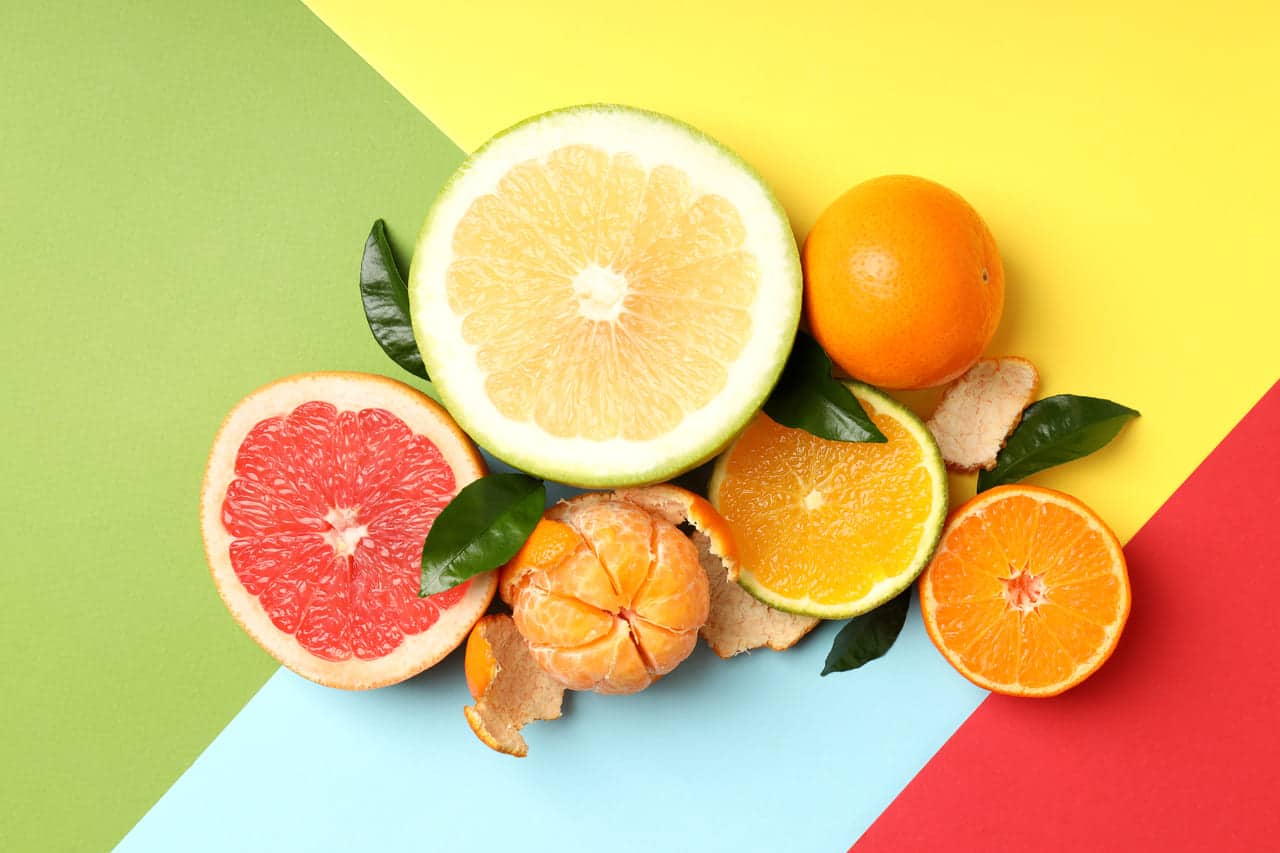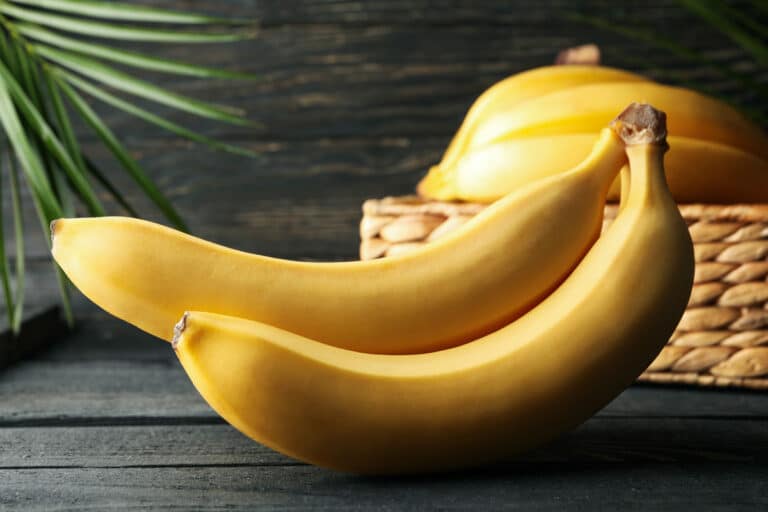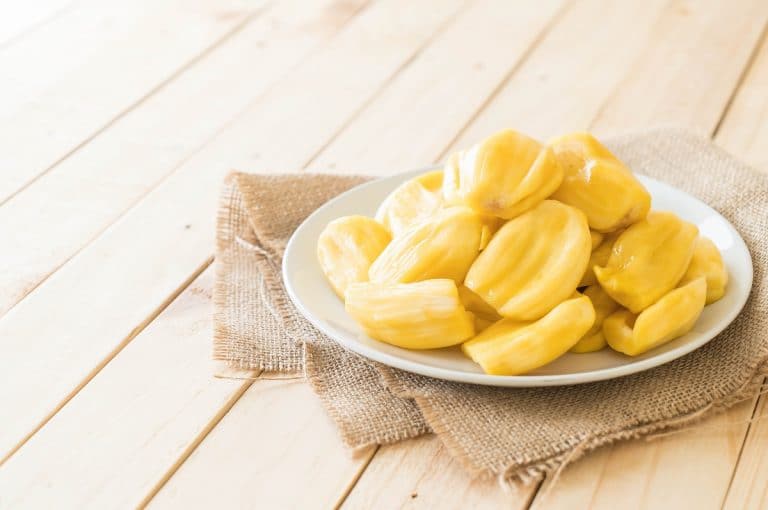Diabetes is a chronic disease that affects millions of people worldwide. According to the American Diabetes Association, fruits that are good for diabetes patients are low in sugar and high in fiber. People with diabetes have to be extra careful about their food choices, as it can directly affect their blood sugar levels.
Fruits are a great source of essential vitamins and minerals that can help maintain a healthy body. But how can you decide which fruits are good for diabetes patients? To help you out, we have compiled a list of fruits that are safe for diabetes patients to consume.
Key Takeaways:
- To regulate blood sugar levels, opt for fruits that are low in sugar and high in fiber.
- Fruit servings should be limited to 2-3 per day and should ideally be paired with a protein or healthy fat source.
- Fresh fruits are always a better option than processed fruits or fruit juices.
- However, higher fruit intake is related to a lower risk of type 2 diabetes.
In This Article
- Top 10 Best Fruits for Diabetes Patients
- 1. Apple
- 2. Orange
- 3. Cherry
- 4. Grapes
- 5. Kiwi
- 6. Blueberry
- 7. Pear
- 8. Avocado
- 9. Apricot
- 10. Papaya
- How does fruit glycemic Index Impact Blood Sugar?
- How much fruit should I eat?
- What is the Nutritional Value of Recommended Fruits?
- How Does Fruit Fiber Help to Control Blood Sugar?
Top 10 Best Fruits for Diabetes Patients
Eating fruit in moderation is important for diabetes patients. Fresh fruits are healthy to consume and provide essential nutrients, but they should be consumed in moderation. Similarly, people with diabetes should avoid consuming processed fruits as they can lead to spikes in blood sugar levels. Some of the best fruits for diabetes patients are:
1. Apple
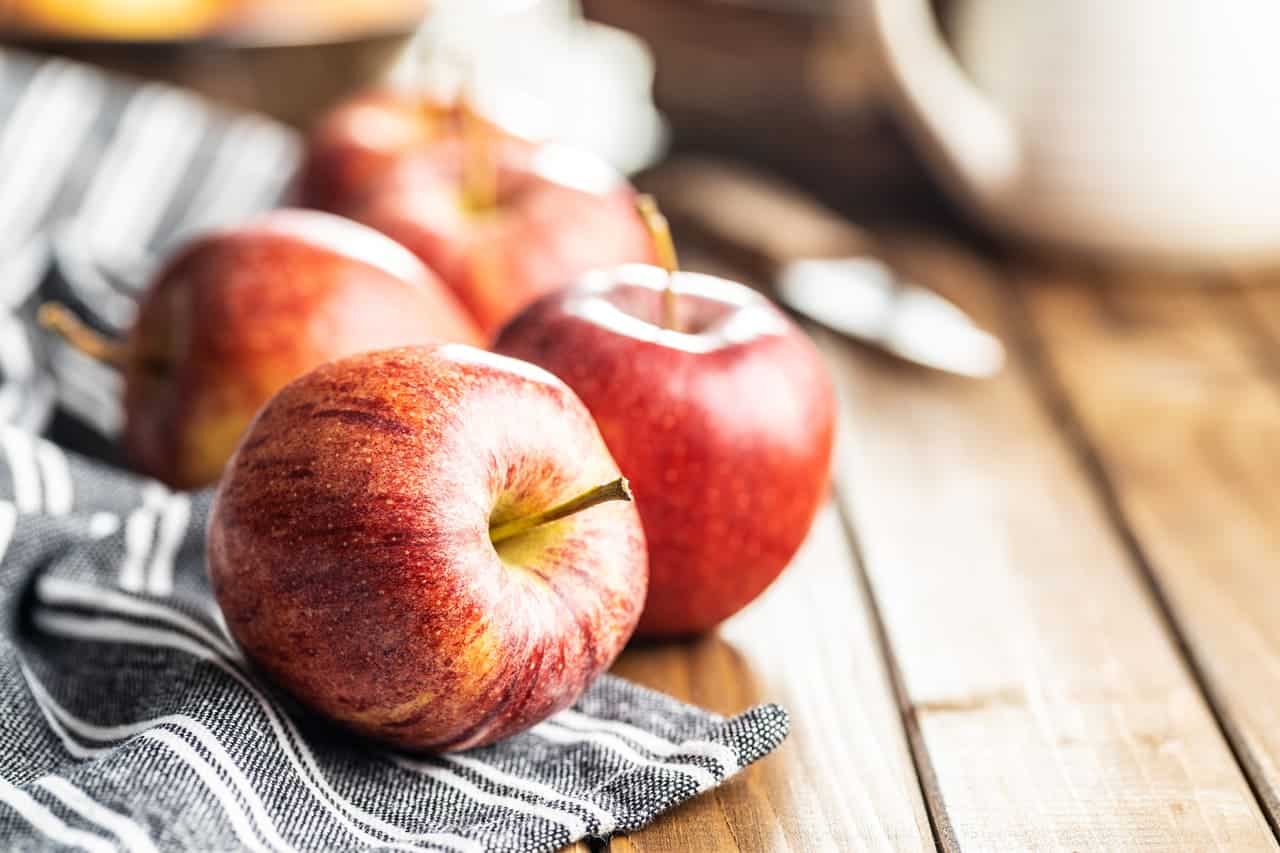
Apple is a popular fruit and a good choice for diabetes patients. Apples contain both soluble and insoluble fiber, making them effective in preventing blood sugar fluctuations. In your diabetes diet, apples are a healthy substitute for carbohydrate-rich foods. With 39 low glycemic index (GI), apples are helpful to reduce the risk of cardiovascular disease.
Apples are good for diabetes because they:
- It is a low glycemic index fruit
- It contains both soluble and insoluble fiber
- It can be used as a substitute for carbohydrate-rich foods
- It helps manage blood sugar levels
- Can reduce the risk of cardiovascular disease
- It promotes weight loss and satiety
- It has anti-inflammatory properties
- Can improve gut health
However, if you eat fruit like apples with high glycemic foods, the glucose will be absorbed more quickly. Therefore, consult your doctor or nutritionist to determine the right amount of apple consumption for you.
2. Orange
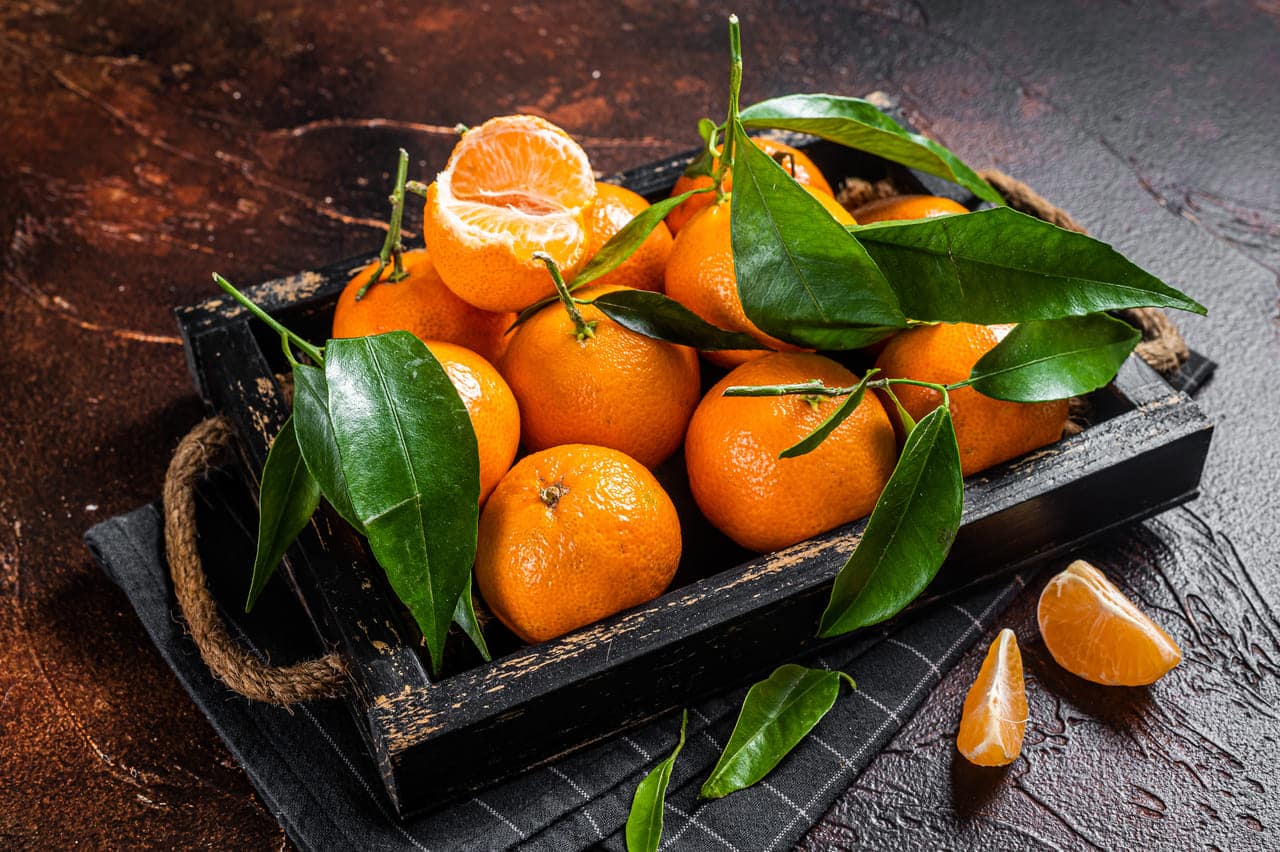
Oranges is citrus fruit that are also beneficial for diabetes patients. They have a low glycemic index of 40, making them safe to consume. Moreover, oranges are rich in vitamin C, antioxidants, and soluble fiber, which can help lower cholesterol and improve heart health.
Oranges are good for diabetes because they:
- It has a low GI index
- It is rich in antioxidants and vitamin C
- They trigger a slow rise in your blood sugar
- It is a good source of soluble fiber
- It improves heart health
- Can reduce the risk of diabetes-related complications
However, people with diabetes can eat 2-3 small oranges per day, but it is essential to monitor blood sugar levels after consumption. If you are already taking vitamin C supplements, consult your doctor before adding oranges to your diet.
3. Cherry
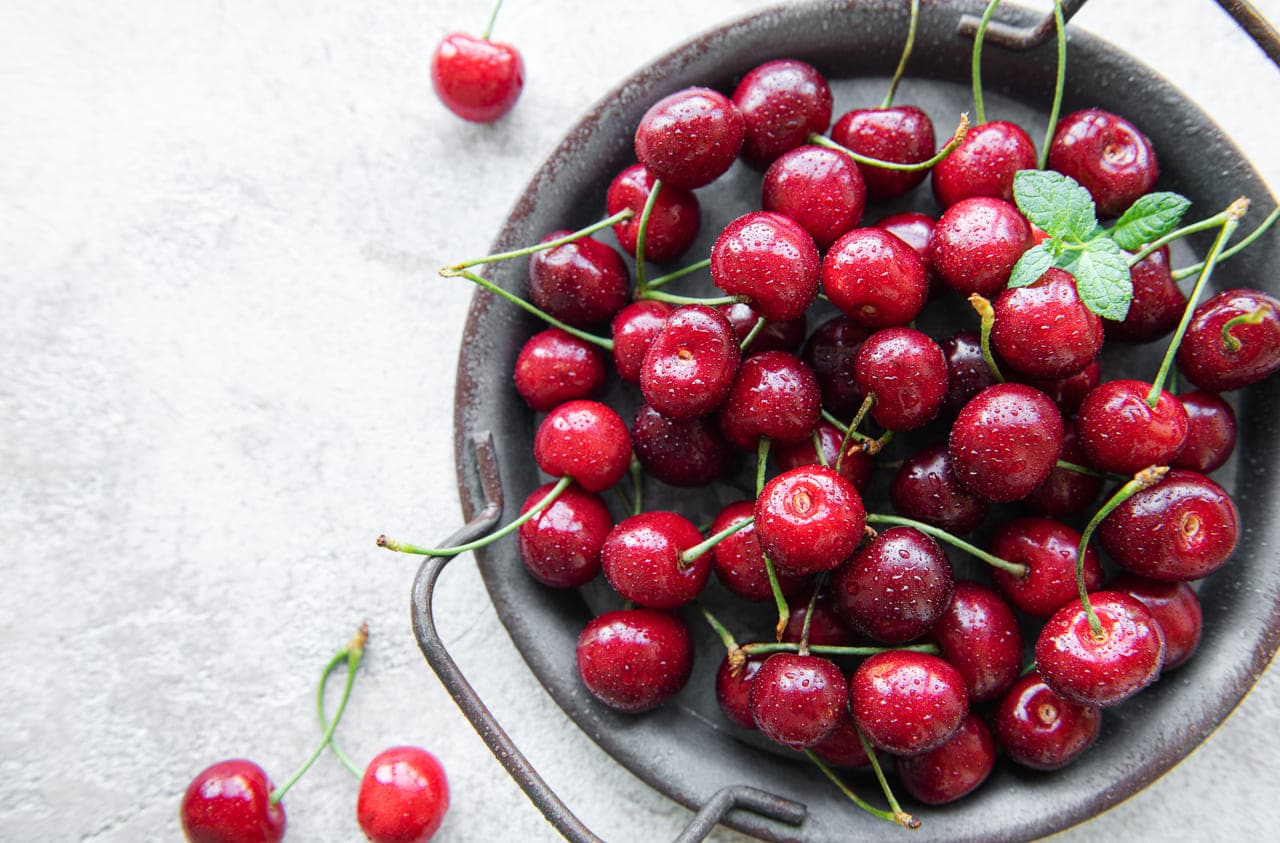
Cherry have a low GI of 22 and are a good source of antioxidants. With high in fiber and low in calories, cherries make a healthy snack for diabetes patients. Research has shown that cherries can help improve insulin sensitivity and lower blood glucose levels.
Cherries are good for diabetes because they:
- It has a low glycemic index
- It is high in antioxidants
- It is a good source of fiber
- Regulating blood sugar levels
- Normalizing vascular function
- Controlling hepatic complications
- It can reduce the risk of diabetes complications
- Reducing inflammation and oxidative stress
According to the American Diabetes Association, a diabetic individual can consume ½ a cup (95 grams) of sour or sweet cherries per day. As a precaution, choose fresh cherries over cheery canned fruits with added sugar.
4. Grapes

Eating fruits that contain natural sugar shouldn’t be off-limits to people with diabetes. With a glycemic load of 9.6, grapes is low on the glycemic index scale and can be consumed in moderation. Grapes vitamins C and K and antioxidants, which help fight diseases in diabetes patients.
Grapes are good for diabetes because they:
- It has a low glycemic load
- Low in calories and high in fiber
- Rich in vitamins and antioxidants
- Contains anthocyanin and resveratrol, which can improve insulin sensitivity
- It can help lower blood pressure
- It can help prevent cancer, obesity, heart disease, and diabetes
- It can improve brain function
However, grapes contain more natural sugars than other fruits, so it’s advisable to eat them in moderation. Limit your intake to 1 cup of grapes per day and avoid eating them with high-carb meals.
5. Kiwi
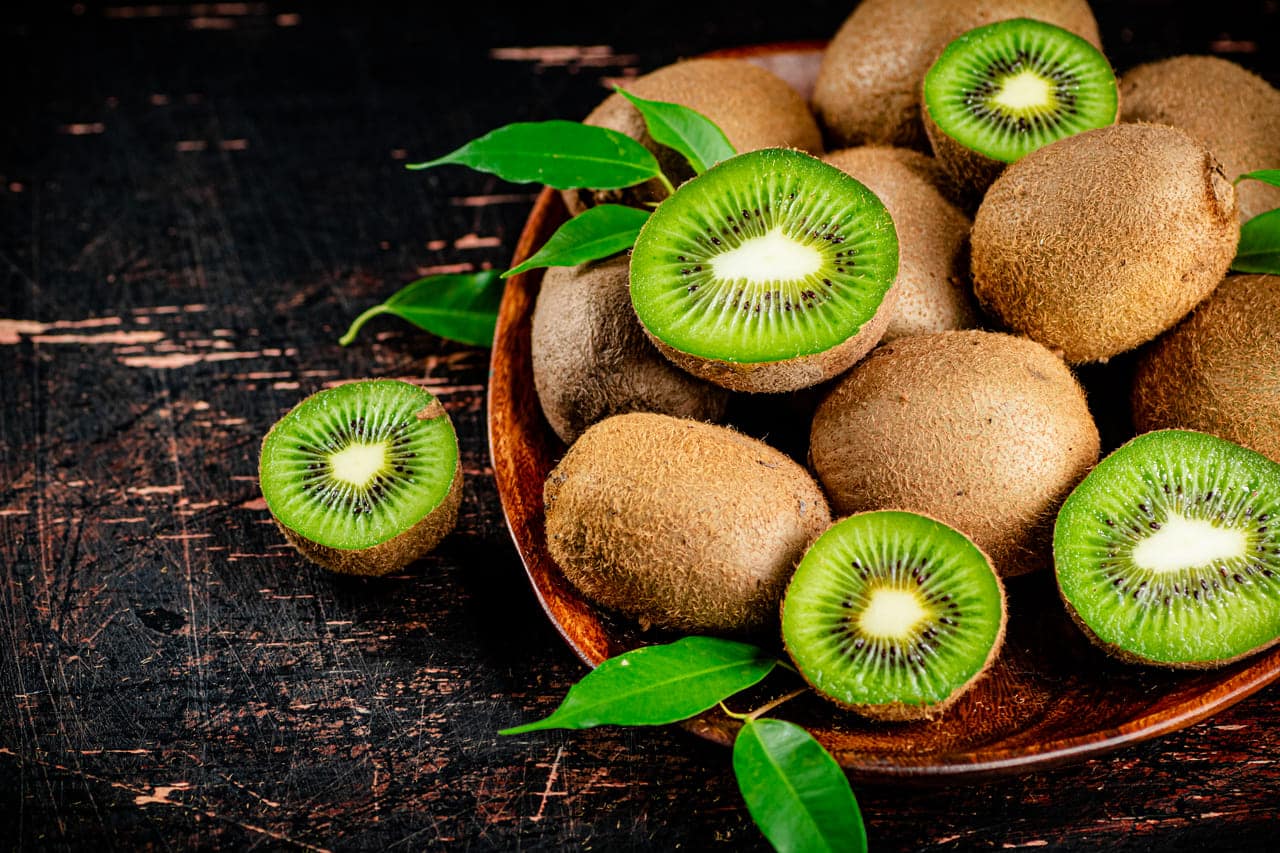
Kiwi is a fresh fruit that possesses a low GI of 50 and is a beneficial fruit for diabetes patients. It is also high in antioxidants, fiber, potassium, and vitamin C. These nutrients help with blood sugar spikes, cardiovascular health, and weight management. Kiwi provides many health benefits, and you can eat this with dried fruits, nuts, or plain yogurt.
Kiwi is good for diabetes because it:
- It has a low glycemic index
- Low in sugar
- High in fiber, vitamin C, dietary fiber, folate, and antioxidants
- High in water content
- Improves digestion
- It can help manage blood pressure
- It’s good for cholesterol management
- It supports healthy skin
It is recommended to eat 1-2 kiwis a day as part of a balanced diet and consult with a doctor to determine the right amount for your specific needs.
6. Blueberry
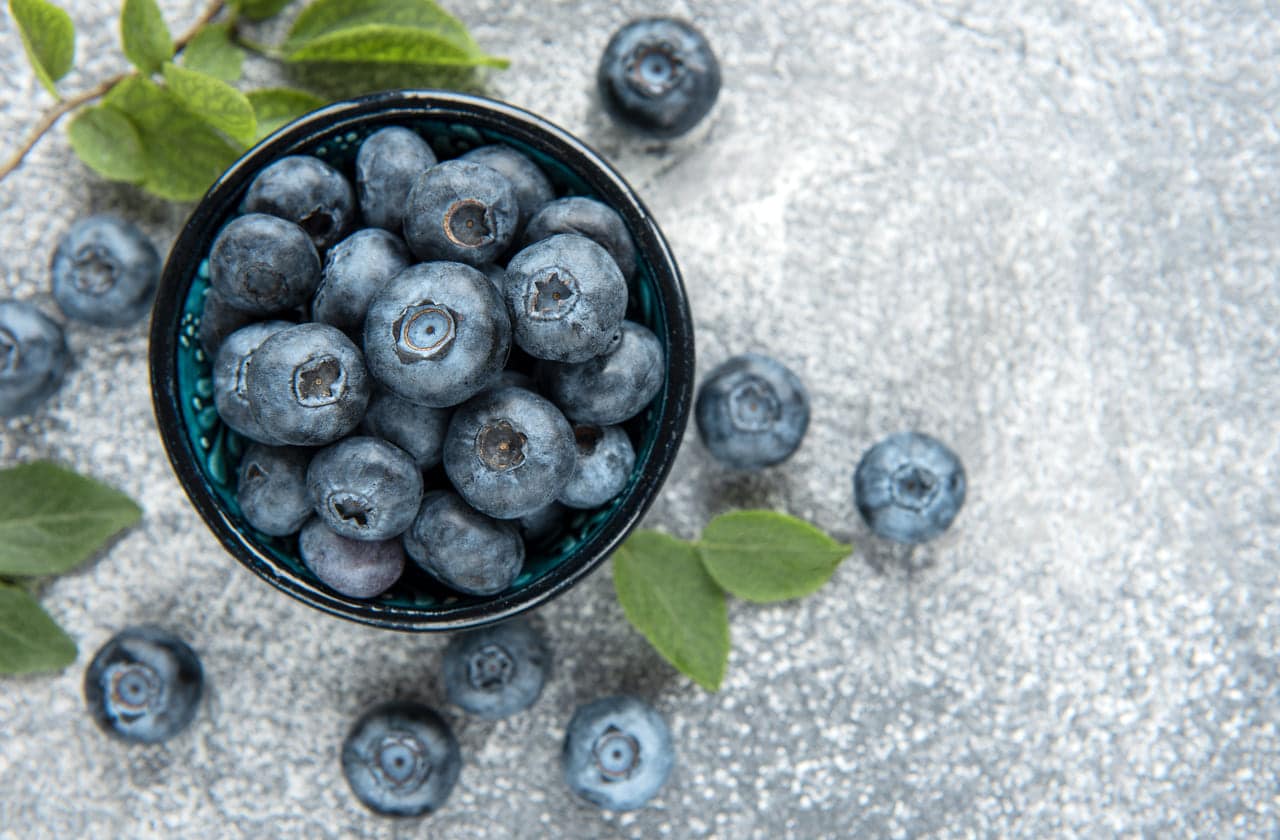
Blueberry is beneficial for diabetes as they have antioxidants that boost the immune system. With 53 low glycemic index (GI), blueberries stabilize blood sugar levels. They are a great source of dietary fiber and promote heart health. According to the study by the Journal of Clinical Endocrinology & Metabolism, people who eat or drink fresh fruit juice blueberry may potentially reduce the risk of developing type 2 diabetes.
Blueberry is good for diabetes because it:
- It is a low glycemic index fruit
- It contains antioxidants, fiber, vitamins, and minerals
- It can help with glucose processing
- It can increase insulin sensitivity
- It may reduce the risk of developing type 2 diabetes
- It can improve heart health
- It has anti-inflammatory properties
When consuming blueberries, it is essential to note that dried or canned blueberries contain added sugars and should be avoided by people with diabetes. Stick to fresh or frozen fruit, and make sure to eat 1-2 cup servings per day.
7. Pear
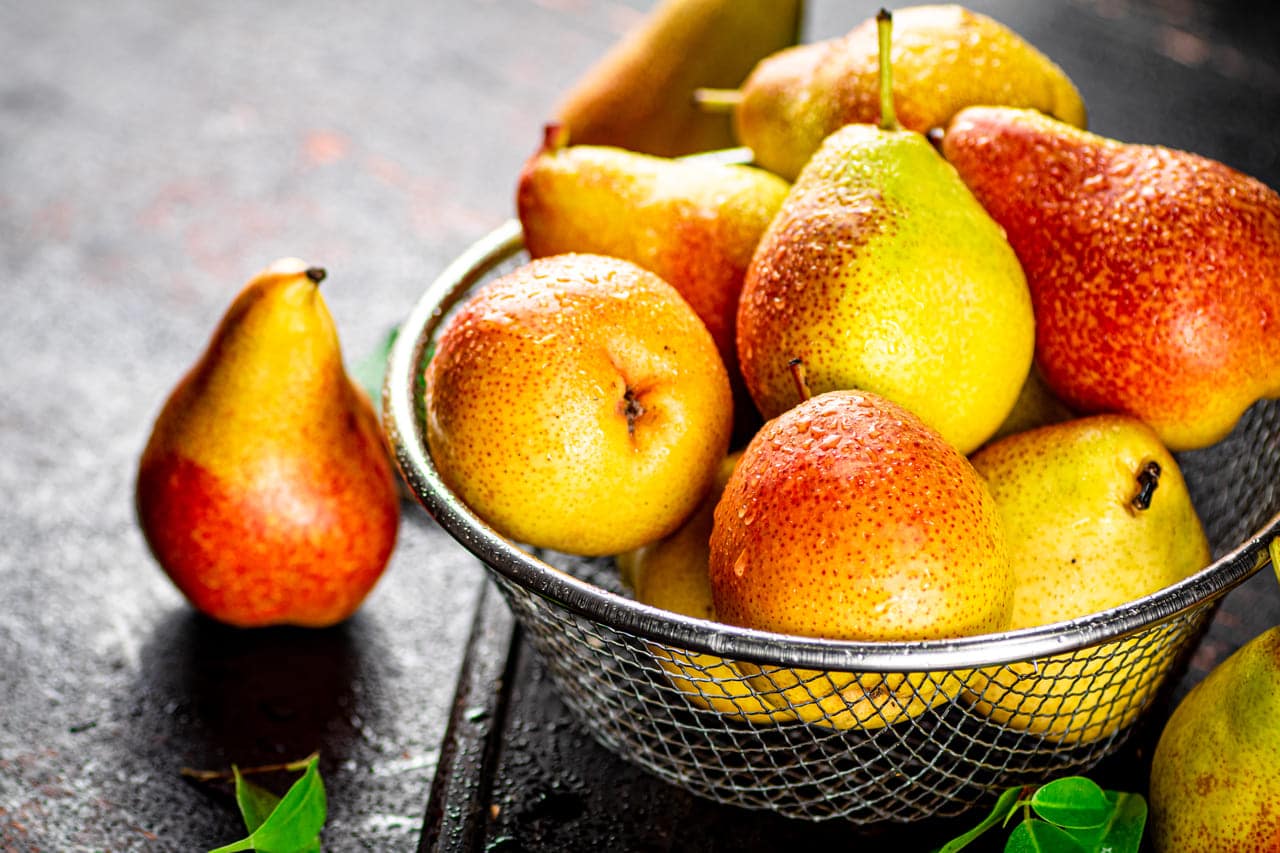
With a glycemic index (GI) of between 20 and 49, pears are a great choice for diabetes patients. Pear contain high amounts of dietary fiber and have a low-calorie content compared to other fruits. They also contain antioxidants and anti-inflammatory compounds that can help lower the risk of heart disease in people with diabetes.
Pear is good for diabetes because they:
- It has a low glycemic index
- It has a high vitamin C content
- Low in calories
- No cholesterol or saturated fat
- It is a good source of dietary fiber
- It can help lower the risk of heart disease in people with diabetes
- Anthocyanins in pears can improve insulin sensitivity
- It can help control blood sugar levels
It is recommended to eat 2-3 medium-sized pears per day as part of a diabetes-friendly diet. You can also include dried fruit or pear juice in your diet, but remember to ask your doctor or dietitian for proper portion sizes.
8. Avocado
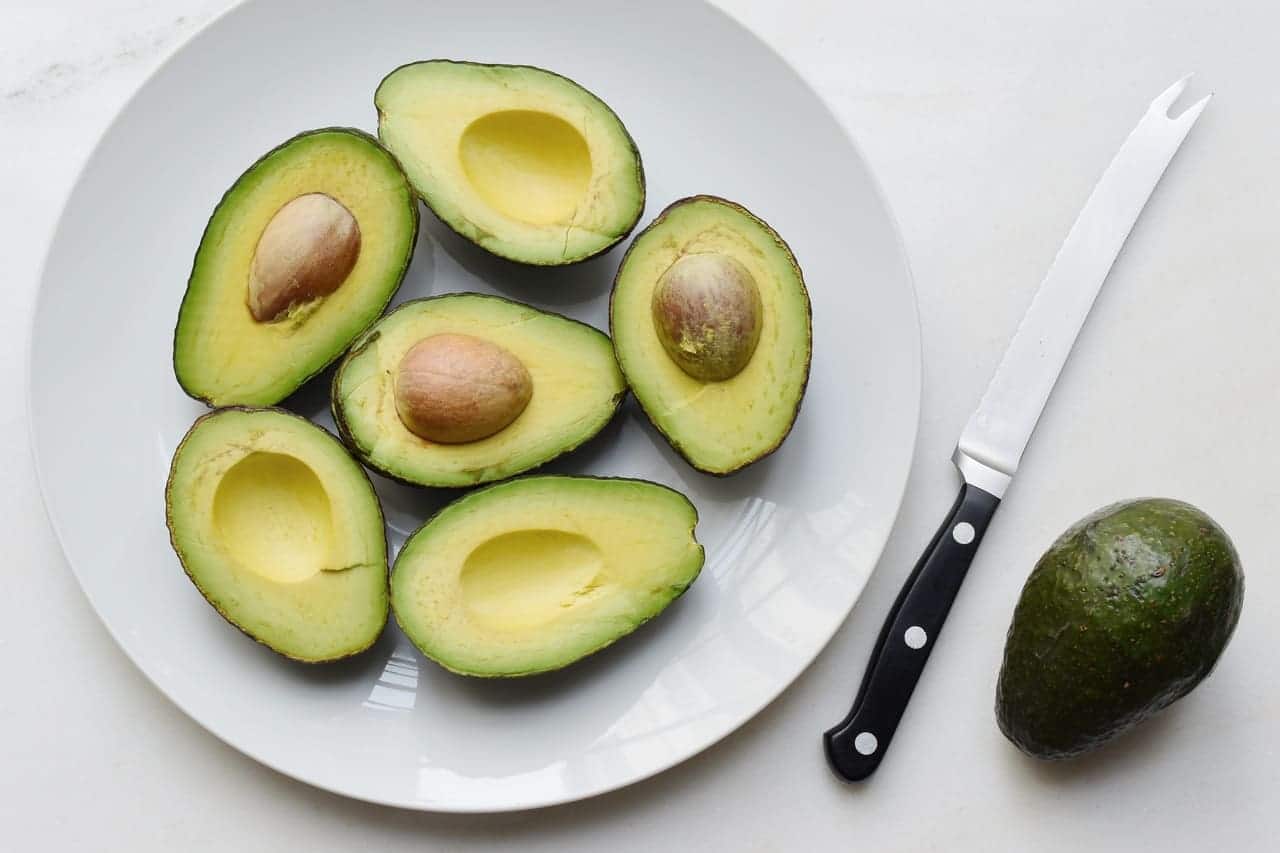
Avocado is low in sugar and high in healthy monounsaturated fats, making them an ideal fruit for diabetes patients. They also have a low glycemic index (GI) of 15, which means they won’t cause spikes in blood sugar levels. Avocados are also good sources of folic acid, fiber, potassium, and magnesium, which can help regulate blood levels.
Avocado is good for diabetes because it:
- It has a low glycemic index
- Improving insulin sensitivity
- Helping with weight loss
- Improving blood lipid levels
- It has a high fiber content
- It is rich in healthy monounsaturated fats
- Can reduce the risk of heart disease
- Can improve overall health and well-being
Furthermore, 1/2 an avocado in one sitting is an appropriate portion size for a diabetic individual. You can enjoy avocados in various ways, such as in salads, smoothies, or as a spread on toast. But be mindful of the overall calories and fats in your meals when incorporating avocados into your diet.
9. Apricot
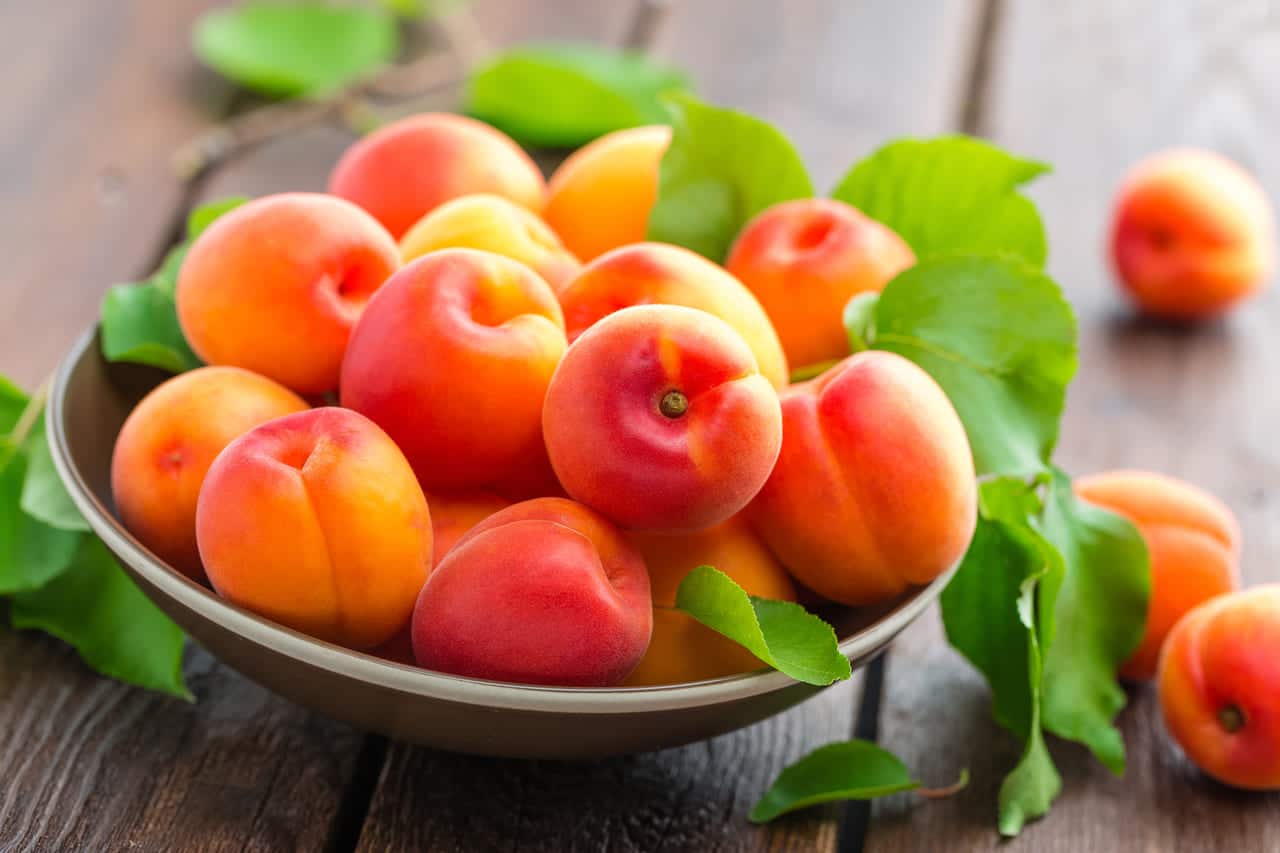
Apricots is a good source of fiber and vitamins A and C. They also have a low glycemic index (GI) 32 score, making them suitable for diabetes patients. Studies have shown that apricots contain compounds that can help regulate blood sugar levels and improve insulin sensitivity. Moreover, the high antioxidant content in apricots makes it an ideal fruit to include in a diabetic diet.
Apricot is good fruit for diabetes because of:
- Its low glycemic index
- It is a good source of fiber and vitamins A and C
- It can help regulate blood sugar levels
- Improves insulin sensitivity
- It contains high levels of antioxidants
- Hypoglycemic functions
- High in potassium
- It has high antioxidant properties
- Lowers the risk of heart disease and stroke
People with diabetes should limit their intake to 2-3 dried apricots per day, as they are high in natural sugars and can spike blood sugar levels if consumed in excess. Always choose unsweetened dried apricots over dried processed fruit.
10. Papaya
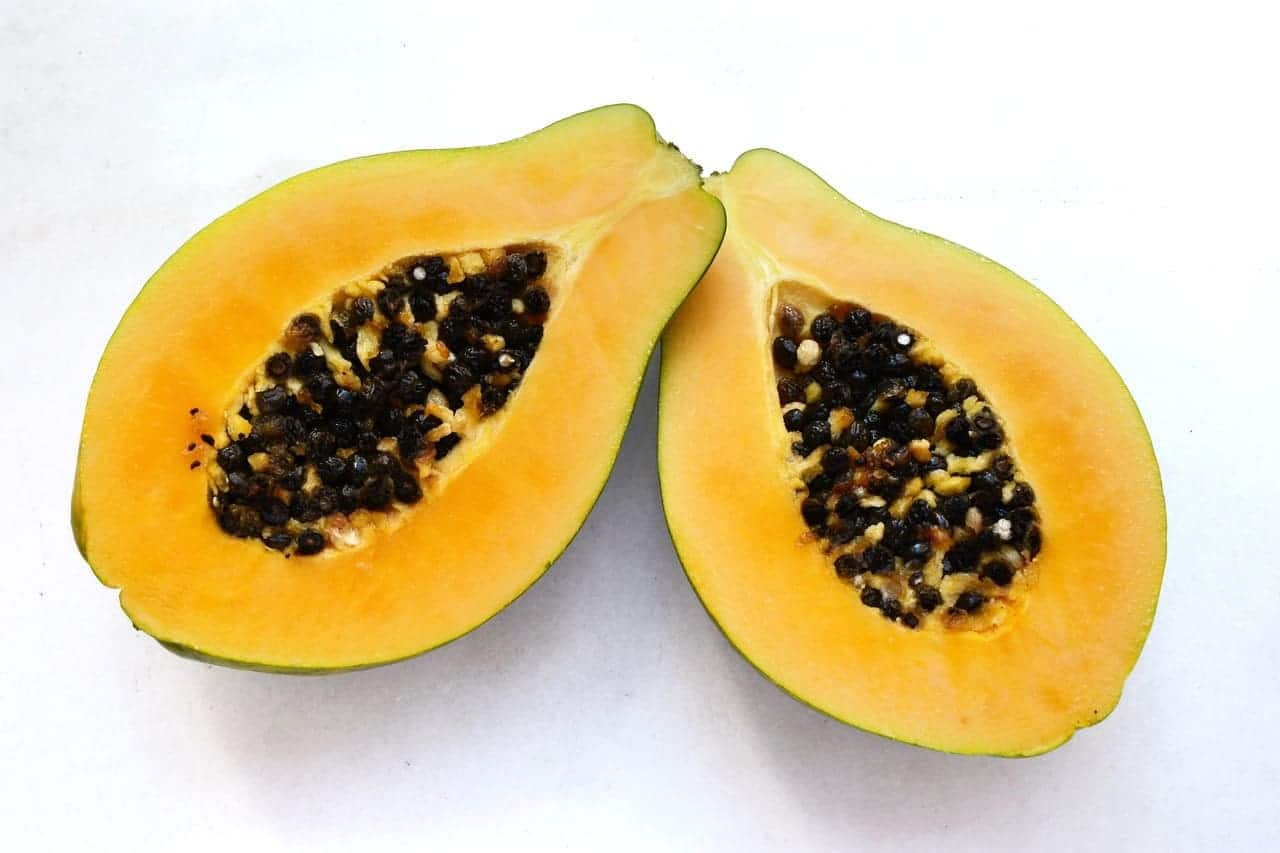
Papaya is good for diabetes. With a medium glycemic index (GI) of 60, it won’t spike blood sugar levels. It also has a hypoglycemic effect, lowering your blood sugar below normal levels.
Papaya is good for diabetes because it:
- It has a low glycemic index
- It has a high fiber content
- It has a rich nutrient profile
- It contains antioxidants and vitamin C
- Can reduce the risk of diabetes complications
- It can boost the immune system
- It can help keep glucose levels in check
However, nutritionists recommend limiting daily papaya intake for diabetic patients to one cup. Although low in calories, the fruit naturally contains organic sugars.
How does fruit glycemic Index Impact Blood Sugar?
The glycemic index (GI) is a measure of how quickly a food can raise blood sugar levels. For people with diabetes, understanding the GI of different fruits is essential in managing their blood sugar levels effectively.
The GI scale categorizes foods into three groups: low, medium, and high;
- Low-GI food has a value of 55 or less
- Medium-GI falls between 56 and 69
- High-GI foods have a value of 70 or above.
When it comes to fruits, those with a lower GI tend to cause blood sugar to rise more slowly compared to fruits with a higher GI. Moreover, canned fruit, dried fruits, and fruit juices generally have a higher GI than fresh ones. This is because the processing involved for these types of fruits often changes the structure of their carbohydrates, making them more quickly digested.
On the other hand, fruits with a lower GI are also generally high in fiber, which slows down the digestion process and helps to prevent spikes in blood sugar levels. Look at the below table to see the GI of some common fruits:
| Fruit Name |
Glycemic Index (GI) |
| Apple | 39 |
| Orange | 40 |
| Cherry | 22 |
| Grape | 53 |
| Kiwi | 50 |
| Blueberry | 53 |
| Pear | 20-49 |
| Avocado | 15 |
| Apricot | 32 |
| Papaya | 60 |
How much fruit should I eat?
The recommended amount of fruit consumption can vary depending on individual factors such as body size, activity level, and specific dietary needs. According to the United States Department of Agriculture (USDA), the suggested daily fruit intake is as follows:
- Female adults: 1.5-2 cups of fruit
- Male adults: 2-2.5 cups of fruit
Most studies indicate that health benefits can be achieved with two to five servings of fruit per day. Yet, a serving size for fruit can depend on the type of fruit consumed. For instance, one small apple or half a large banana is considered one serving, while half a cup of dried fruit counts as two servings.
It’s important to note that when it comes to fruit juice, the recommendations differ. It is advised to limit fruit juice consumption to one portion of approximately 150ml per day. Fruit juice tends to be high in sugars and lacks the other beneficial components found in whole fruits. Moreover, it can cause a sweet tooth, leading to over consumption of sugary drinks and potential health risks.
What is the Nutritional Value of Recommended Fruits?
The above-recommended fruits for diabetes patients are not only low in glycemic index but also high in nutritional value. Look at the below table to find out the nutritional value of recommended fruits:
| Fruit | Calories (kcal) | Carbs (g) | Fiber (g) | Vitamin C (mg) | Protein(g) |
| Apple | 95 | 25 | 3 | 4.6 | 1 |
| Orange | 73 | 16.5 | N/A | 53.2 | 1.3 |
| Cherries | 97 | 25 | N/A | 10 | 2 |
| Grapes | 104 | 27 | 0.9 | 4 | 1 |
| Kiwi | 42.1 | 10.2 | 2.1 | 92.7 | 1 |
| Blueberries | 14.5 | 11 | 2.4 | N/A | N/A |
| Pear | 55 | 14.8 | 3.1 | 7 | 0.13 |
| Avocado | 240 | 13 | 10 | 12 | 3 |
| Apricot | 48 | 11.1 | 2 | 10 | 1.4 |
| Papaya | 120 | 30 | 5 | 61 | 0.47 |
How Does Fruit Fiber Help to Control Blood Sugar?
Fruits are an important part of a healthy diet, providing essential vitamins and minerals that our bodies need. In addition to these nutrients, fruits also contain fiber – a type of carbohydrate that is not digested by the body. This makes it an important nutrient for controlling blood sugar levels. Here’s how fruit fiber helps in managing blood sugar:
- Slow digestion: The fiber in fruits slows down the digestion process, which means that sugar is released into the bloodstream at a slower rate. This prevents sudden spikes in blood sugar levels.
- Insulin production: Fiber also helps to regulate insulin production, the hormone responsible for regulating blood sugar levels. By keeping insulin levels steady, fruit fiber can help maintain stable blood sugar levels.
- Improves Gut Health: Fiber is also essential for maintaining good gut health. A healthy gut means better absorption of nutrients, including glucose, from the food we eat. This can contribute to more stable blood sugar levels.
- Lowers Glycemic Index: The glycemic index (GI) is a measure of how quickly a food raises blood sugar levels. Low GI foods, such as most fruits, have a gentler impact on blood sugar levels.
It’s important to note that not all fruits are created equal when it comes to fiber content. Some fruits, such as apples and berries, contain higher amounts of fiber compared to others, like melons and citrus fruits. So, it’s recommended to consume whole fruits rather than fruit juices – which have had their natural fibers removed.

